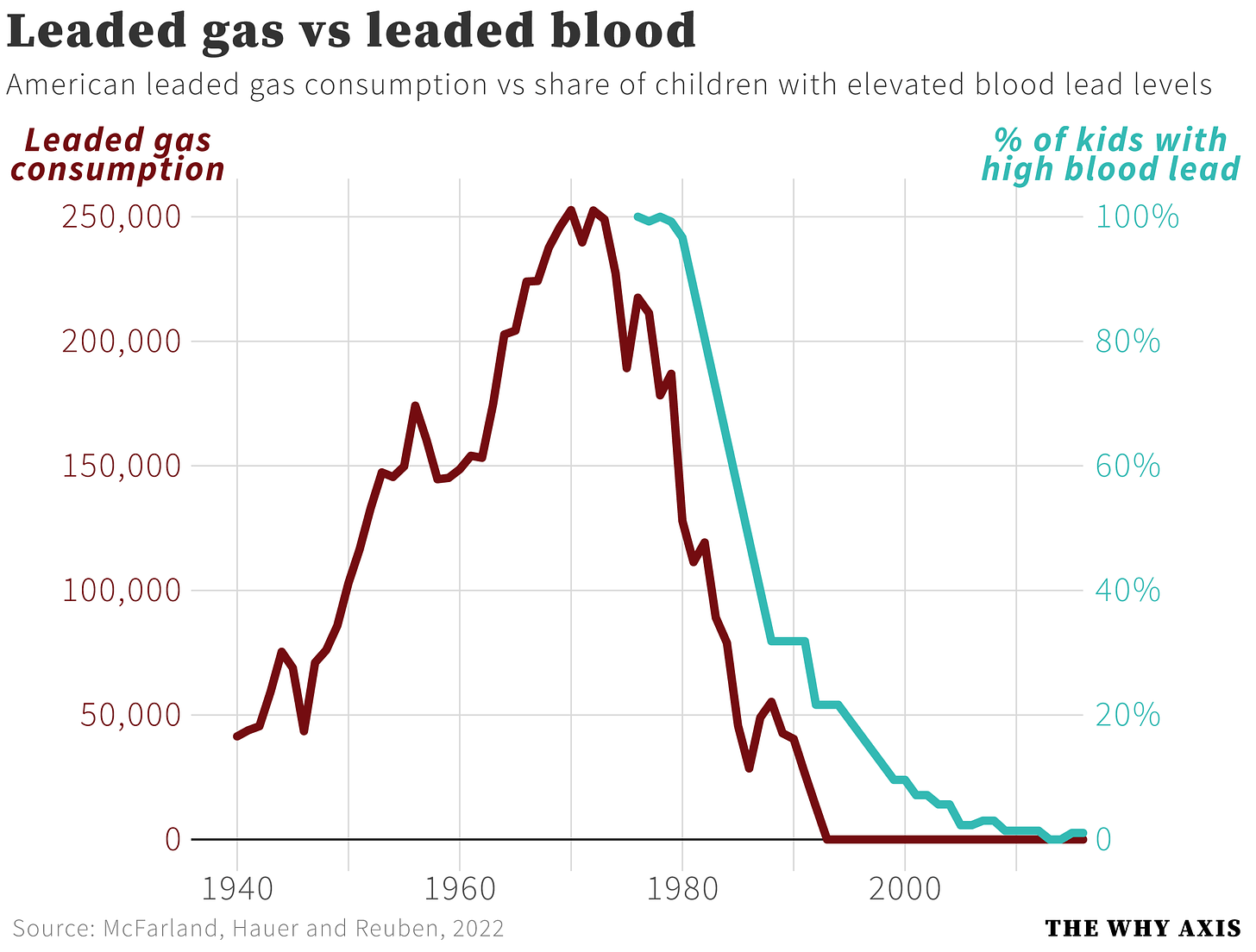So I tweeted out the lead story yesterday and it ended up getting a ton of attention, which is great — as a writer, there are few things you crave more than attention from random people on the internet (any writer who tells you otherwise is lying (this is doubly true for journalists)).
People had a lot of questions about it, and a lot of comments too, and I saw certain misperceptions bubble up over and over again. So what I want to do today is tackle some of those questions and misperceptions.
Misperception #1: I didn’t eat a lot of paint chips as a kid so I probably wasn’t exposed to too much lead.
While lead was everywhere in the middle of the 20th century — paint, water pipes and toys, among other places — the chief source of human exposure was leaded gasoline, which was aerosolized and pumped into the air by automobile engines. This is why virtually everyone born in the 60s and 70s had dangerously elevated blood levels as children — there was literally no escape from the stuff. Even if you didn’t have lead paint on your walls or lead pipes leading to your home, if there were cars nearby you had no choice but to breathe it in.
The story of lead exposure is fundamentally a story about air pollution.
Misperception #2: Weren’t the Boomers exposed to more airborne lead than Gen. X?
Another thing that’s not widely understood — I certainly didn’t realize it until I read this study! — is that leaded gasoline use didn’t peak until around 1970. The chart below shows total leaded gas consumption in tons in the U.S., and again it comes from the recent PNAS study.
In 1970 Americans were burning about 2.5 times as much leaded gas as they had been in 1950, for instance. But the EPA started cracking down on lead shortly thereafter, and consumption plummeted.
Incidentally, take a look what happens when you superimpose the plot of elevated childhood blood lead over that same chart:
Just in case you needed another piece of evidence that leaded gas was the primary driver of those blood lead levels.
Question #3: But Boomers still breathed in that same air in the 1970s, right? So weren’t they exposed to more lead over time, just by dint of being alive for a longer period?
So this is a good question and it’s probably the case that if you’re tracking cumulative lifetime exposure, Boomers have had more lead to deal with than younger generations. But my understanding is that it’s a little beside the point for the following reason: lead is much, much more harmful to children than other age groups, simply because their brains and bodies are still developing, and lead tends to disrupt that development. From a public health standpoint, then, exposure in childhood counts a lot more than exposure during adulthood.
Here are a few links if you want to read more:
» Half of US population exposed to adverse lead levels in early childhood — the PNAS article yesterday’s story was based on (ungated PDF available here).
» Health effects of lead exposure, from the CDC.
» Good Vox summary of the history and effects of leaded gasoline.
» Humans are far from the only species bearing biological markers of leaded gasoline. Here, for instance, is a chart from the National Park Service showing lead levels in lichen specimens collected during the 20th century.






